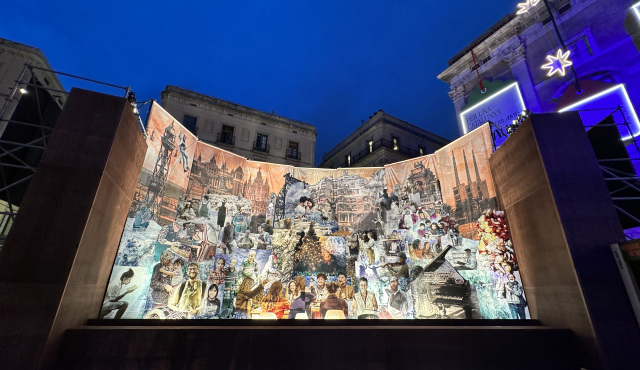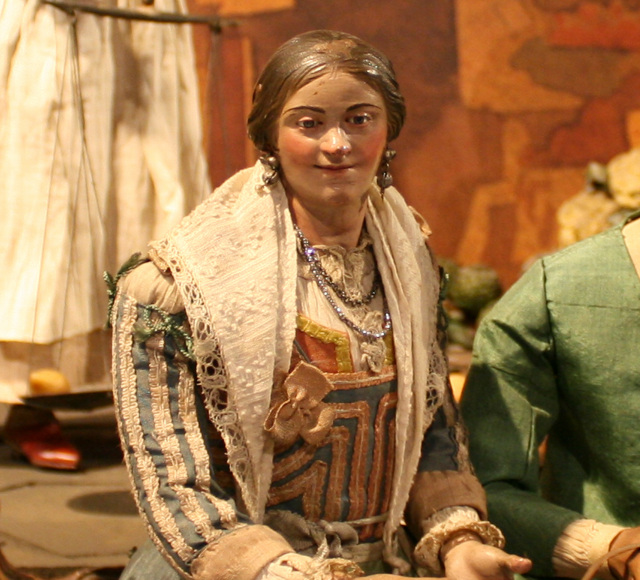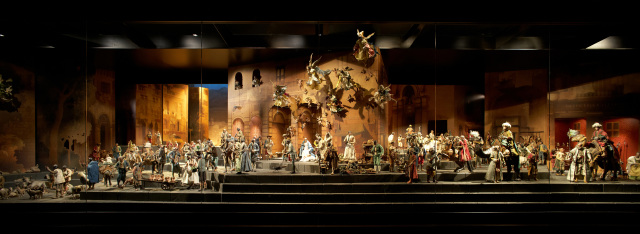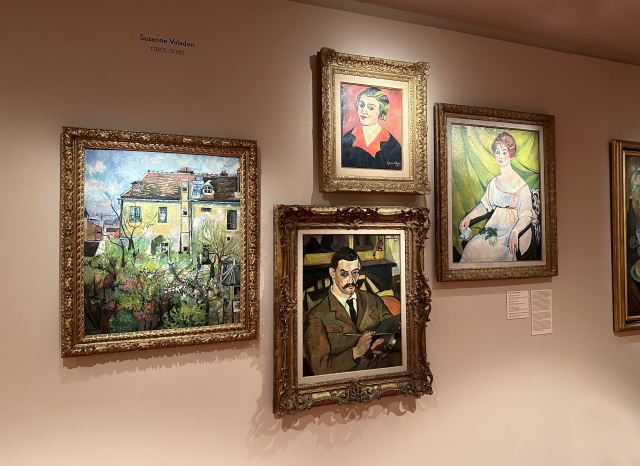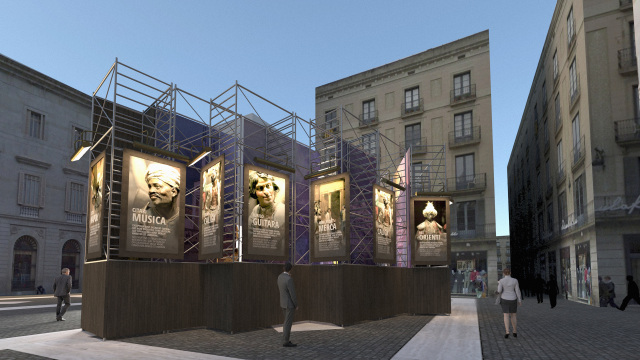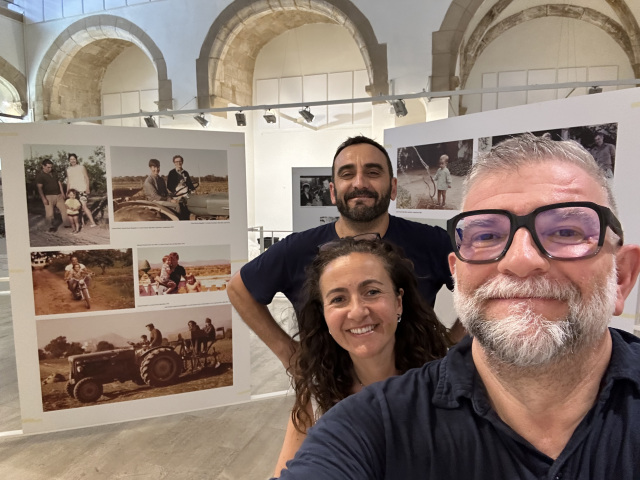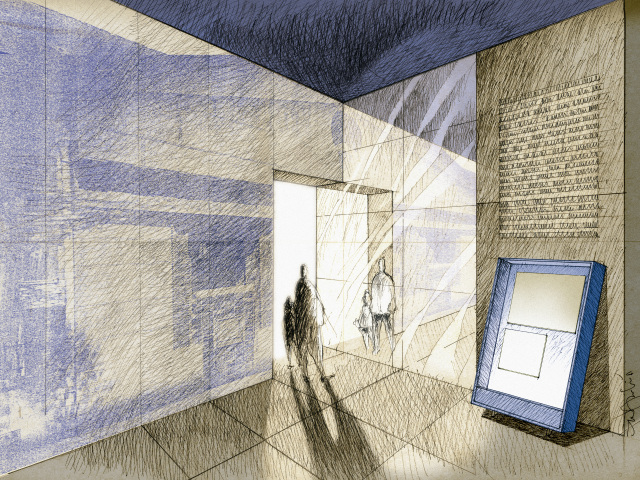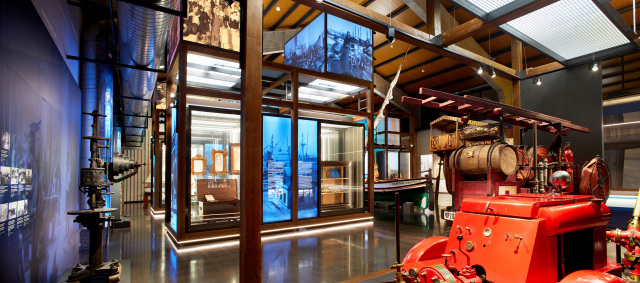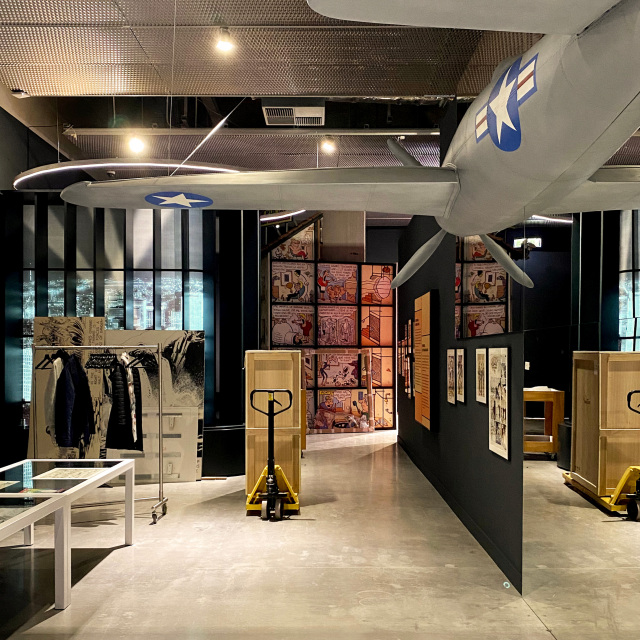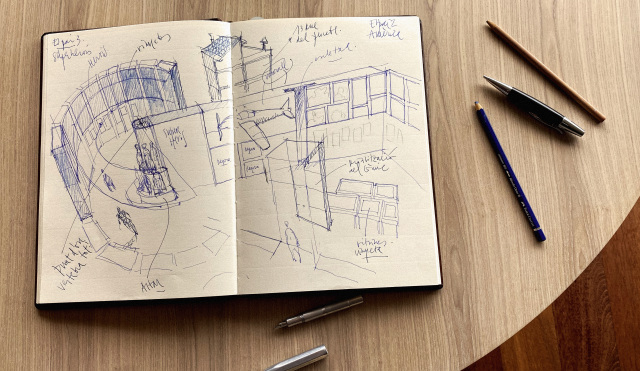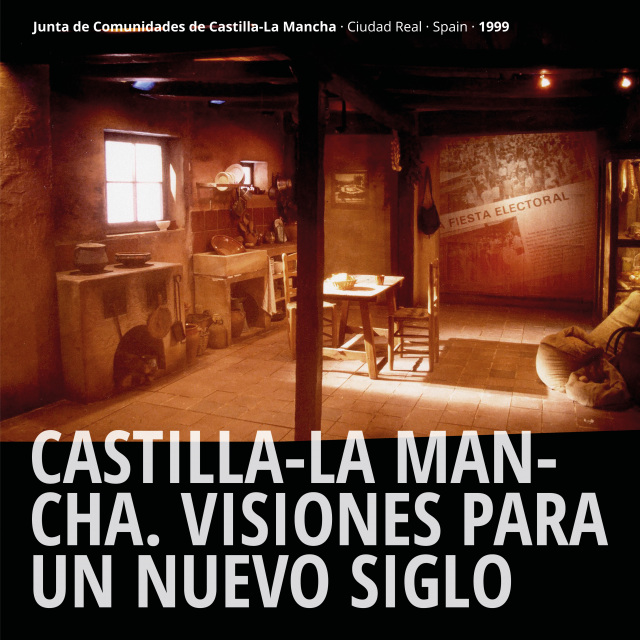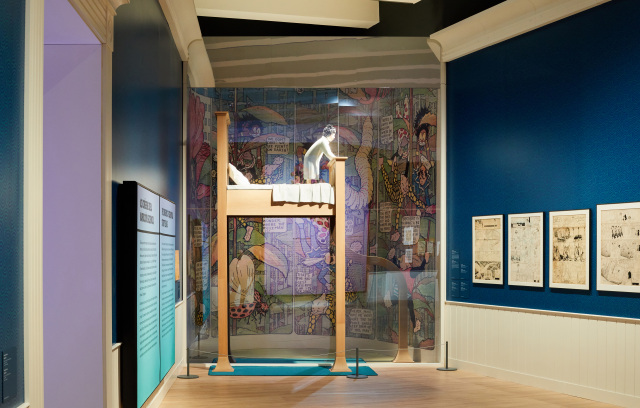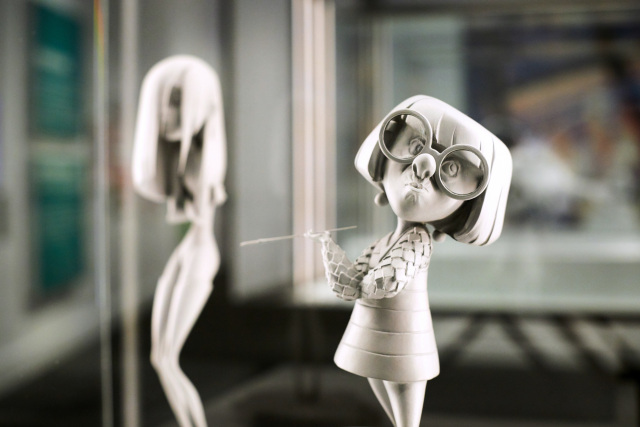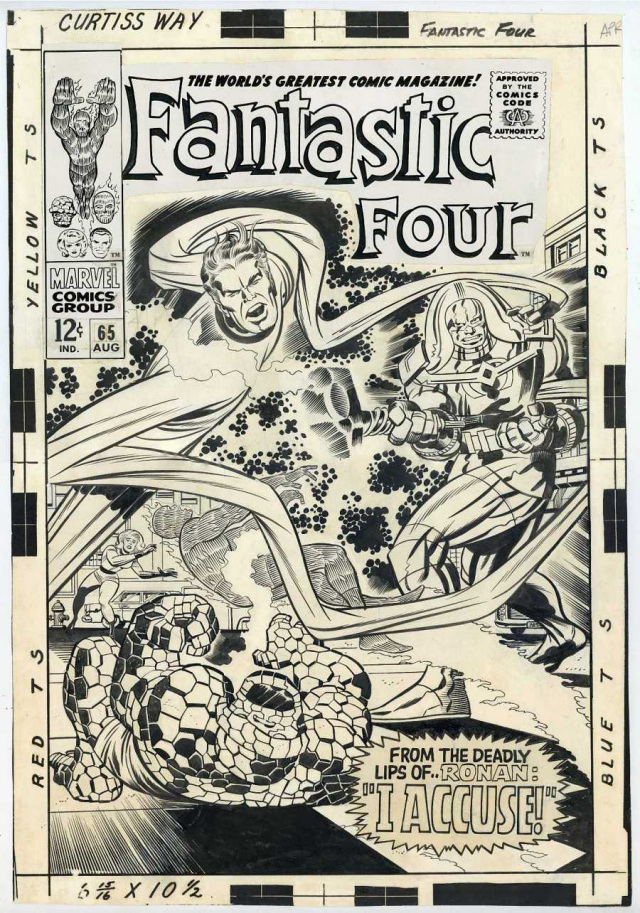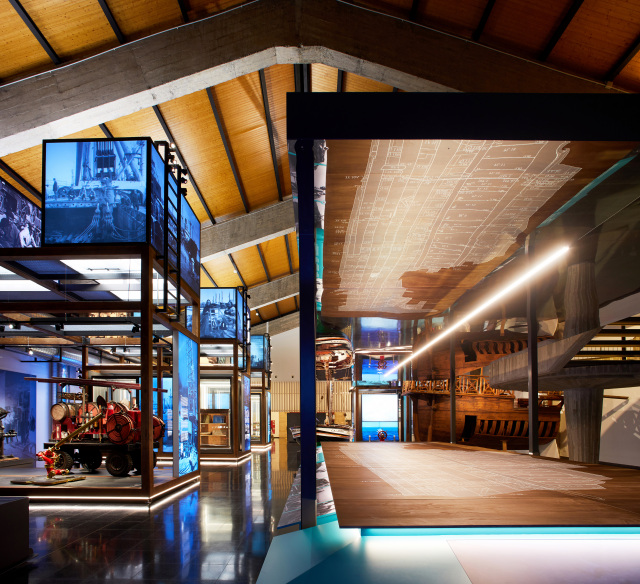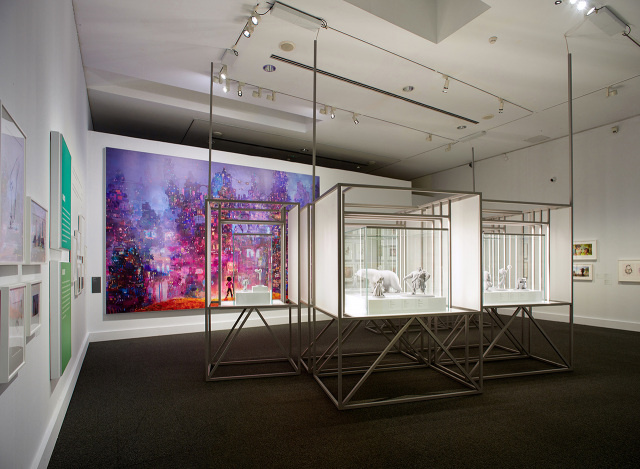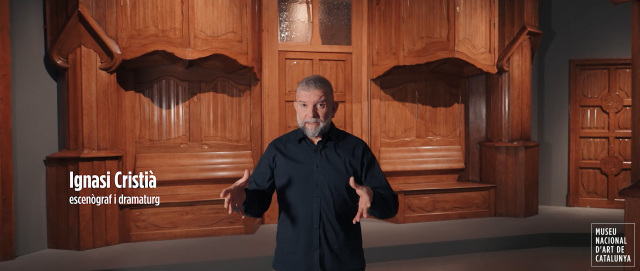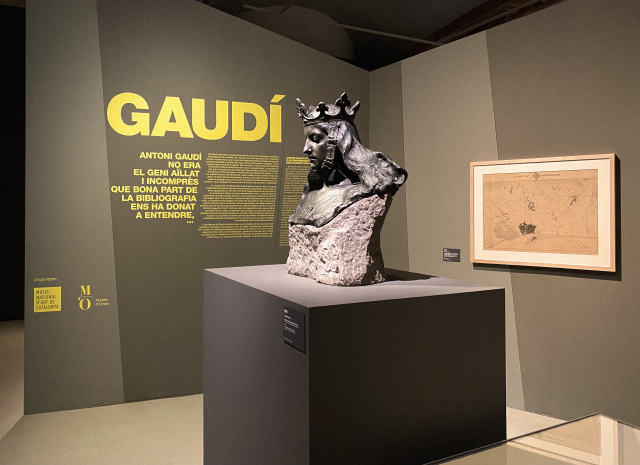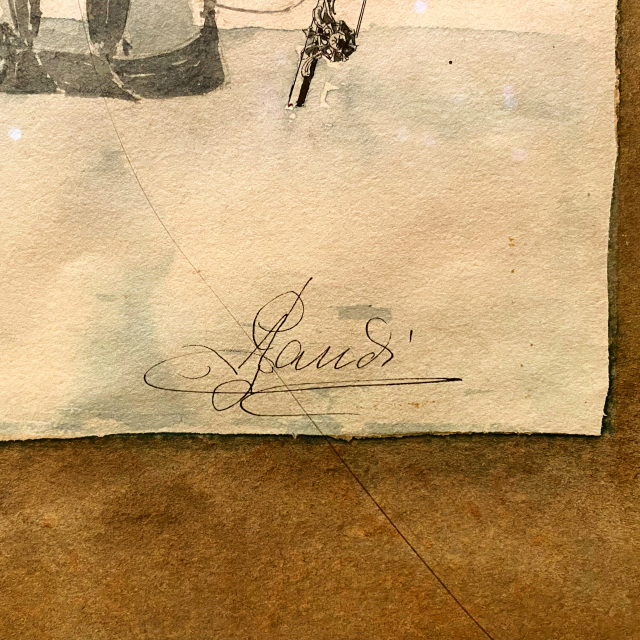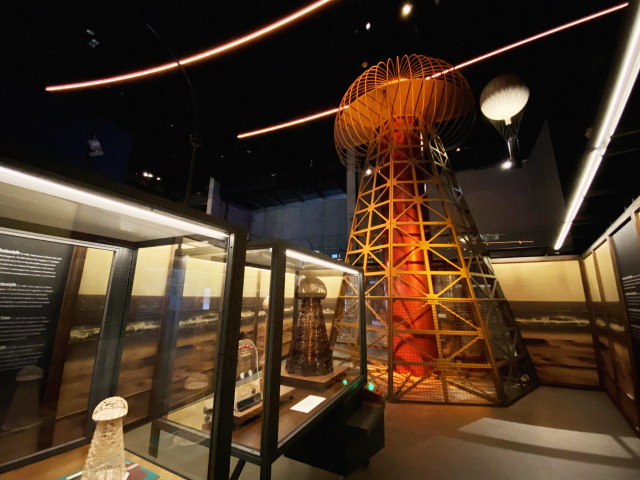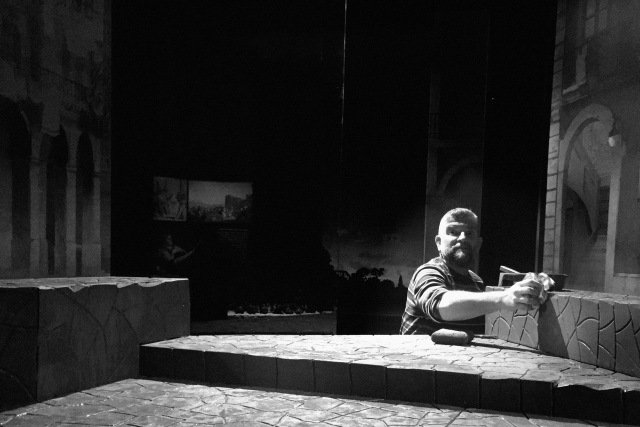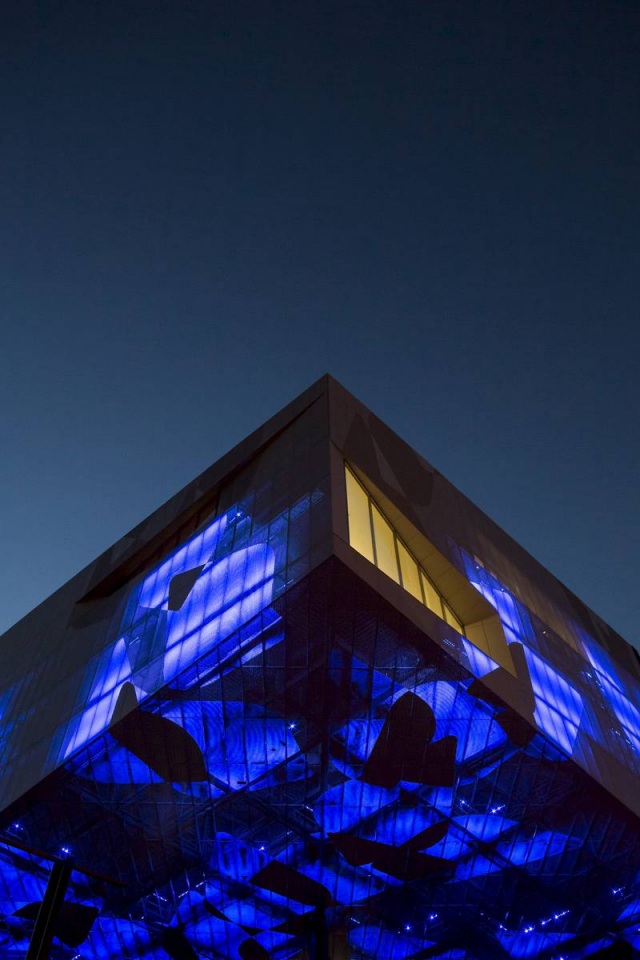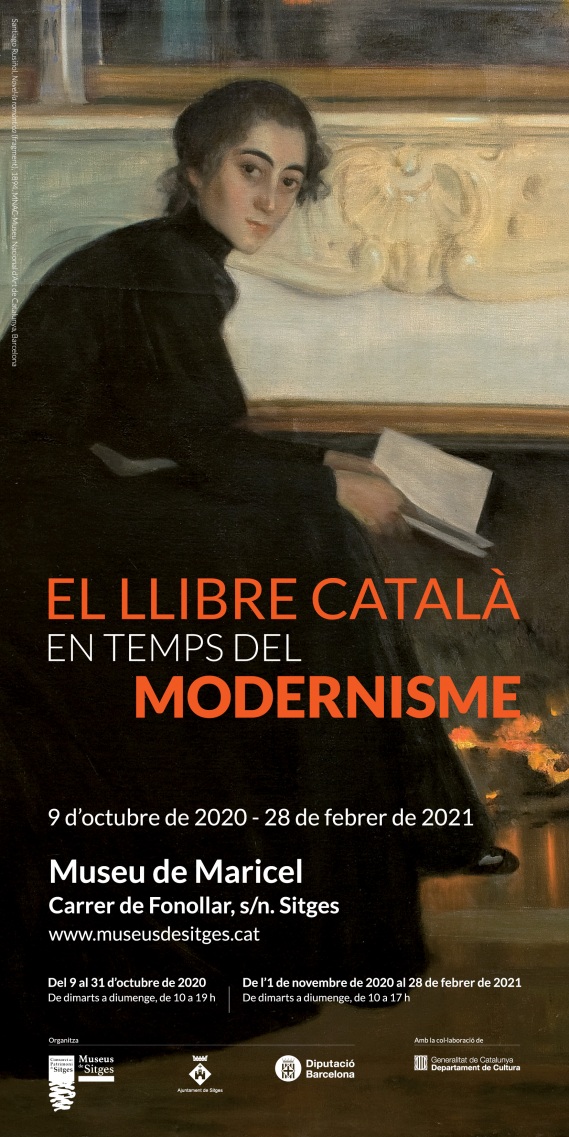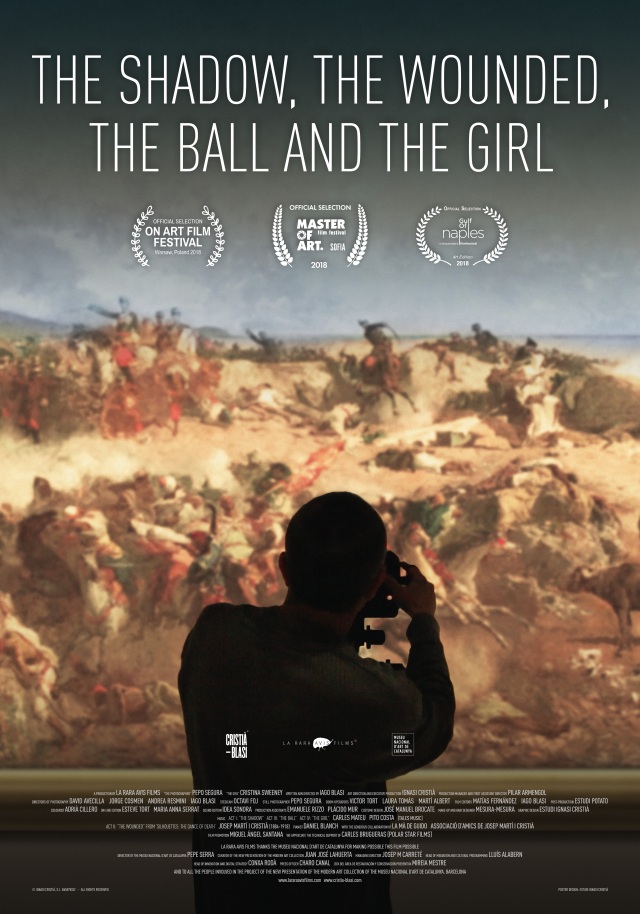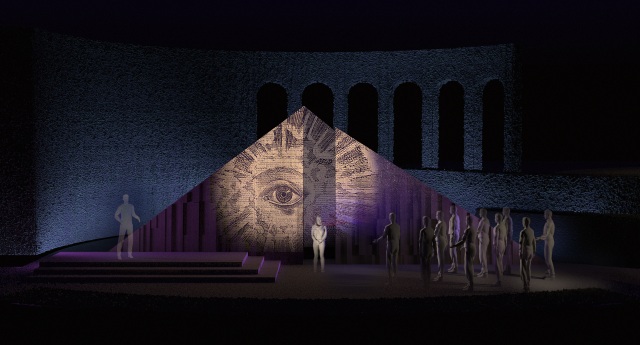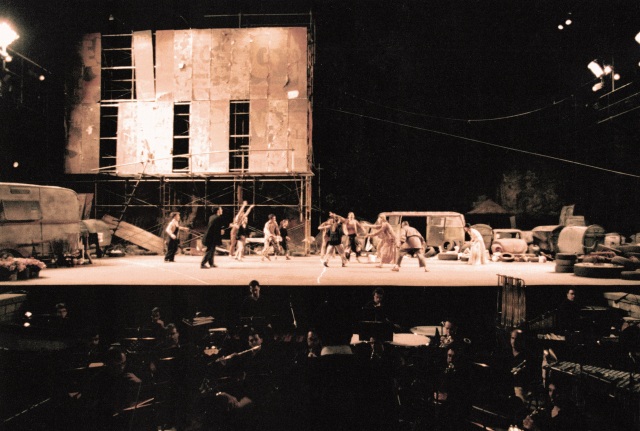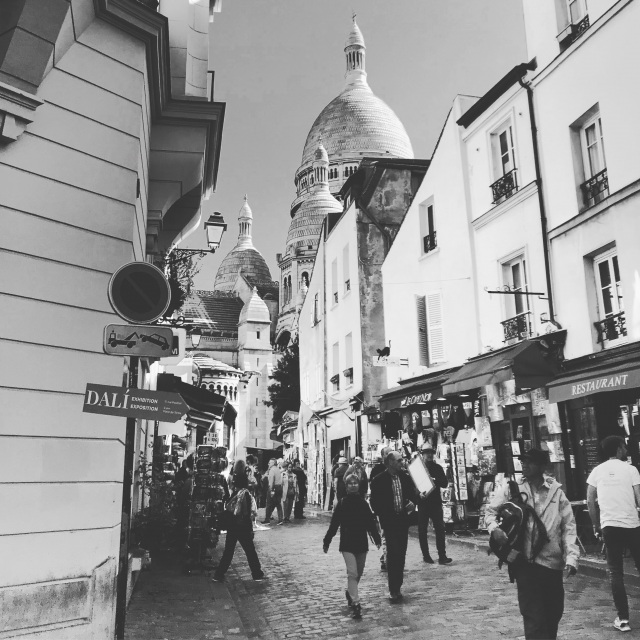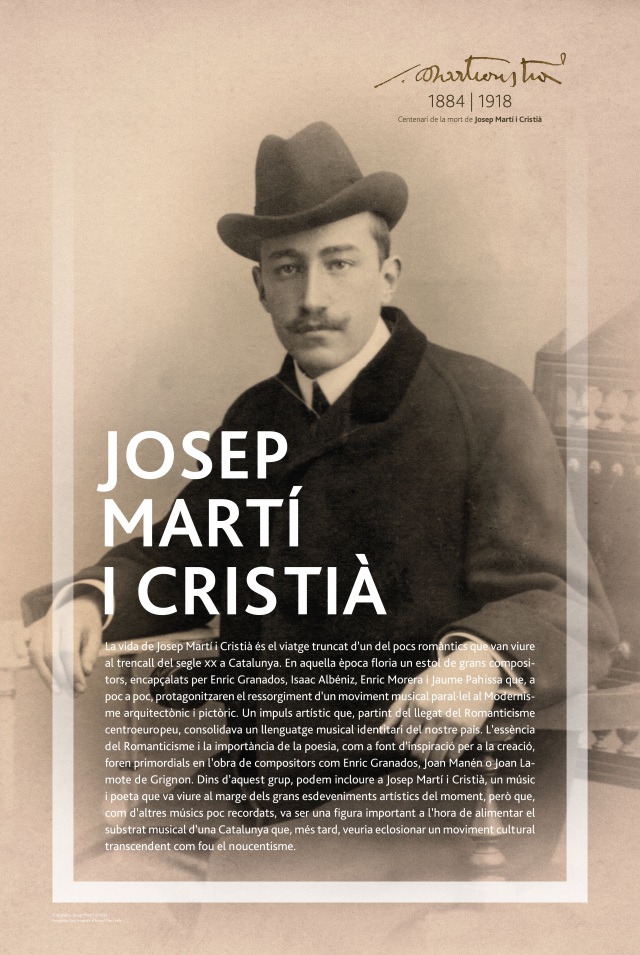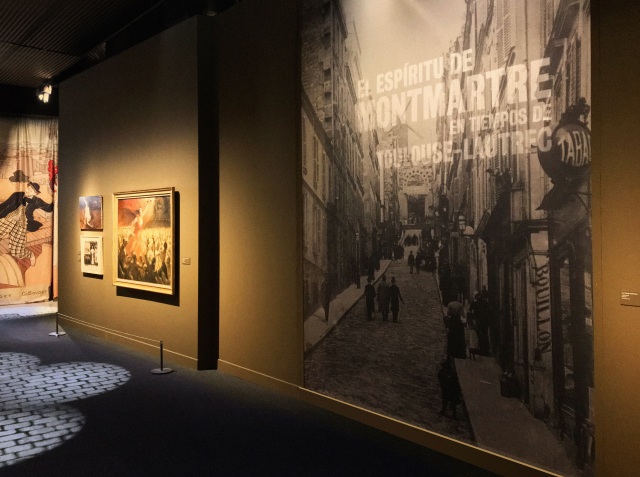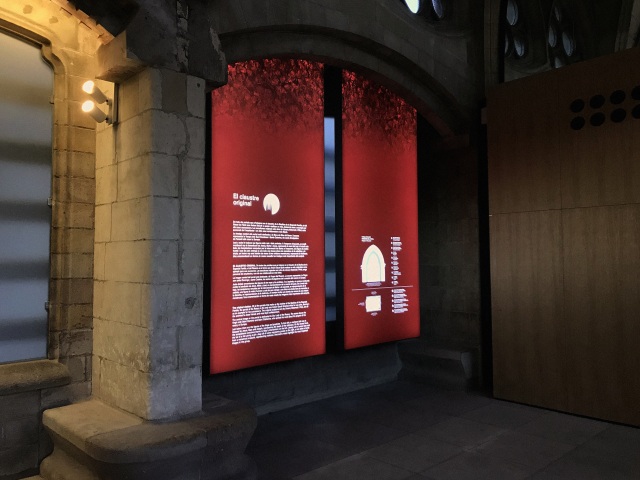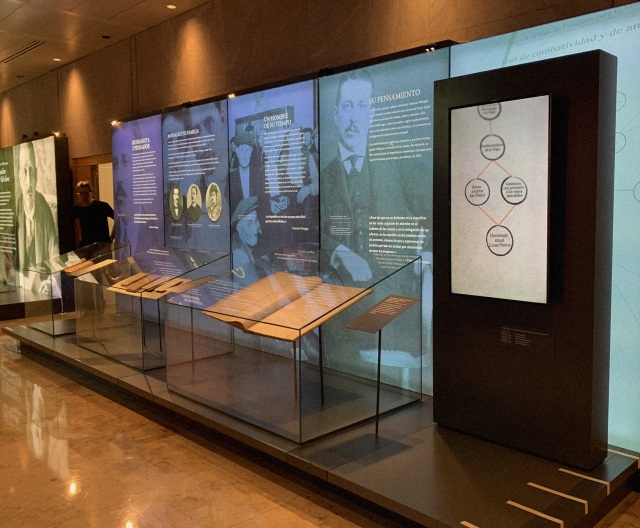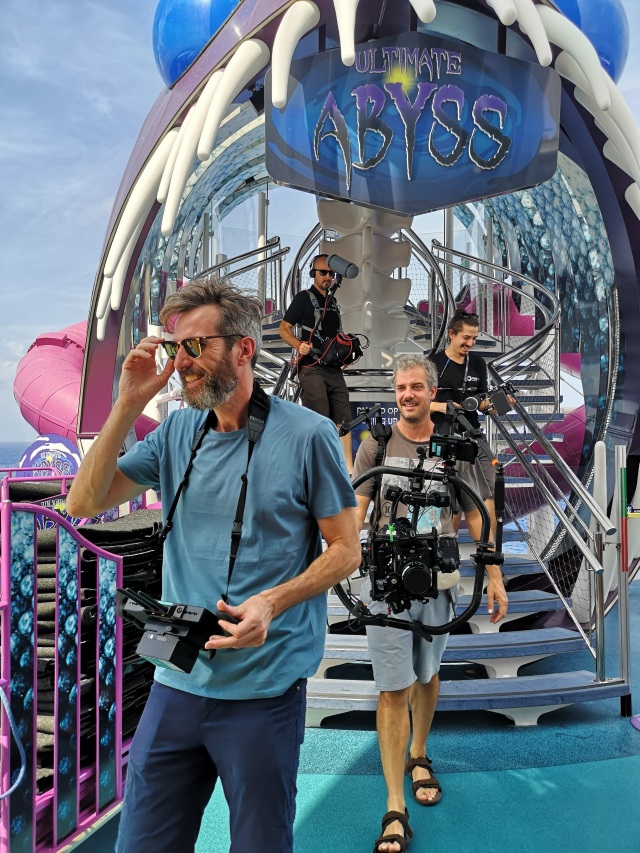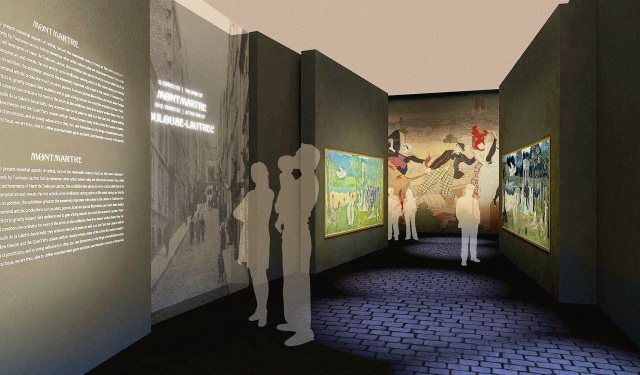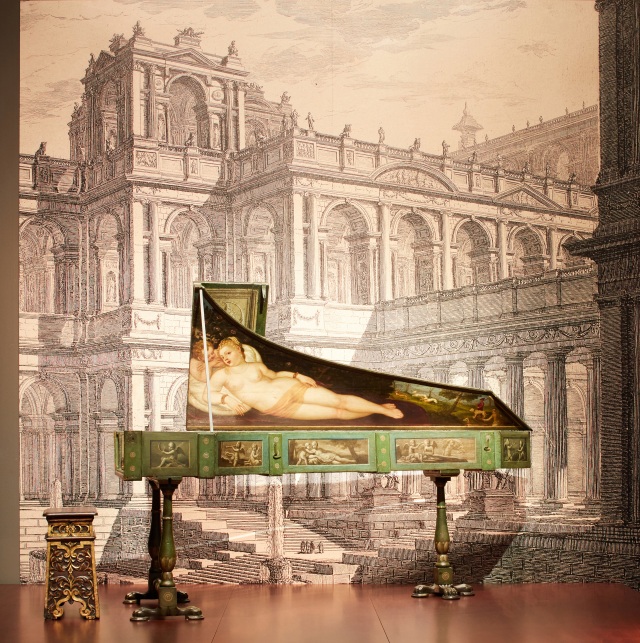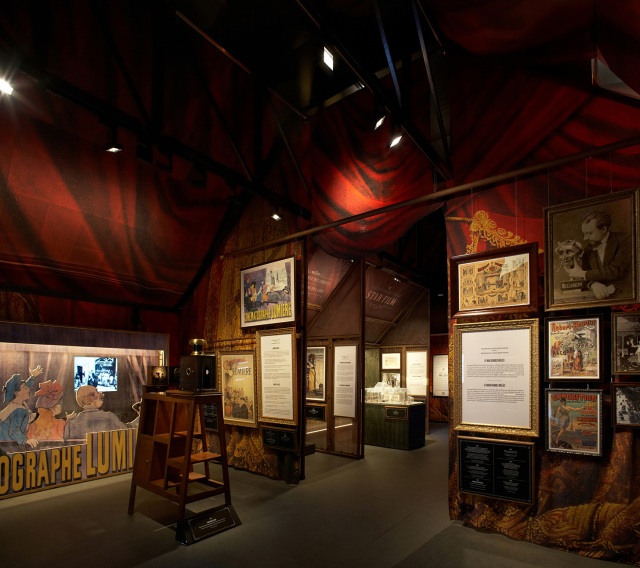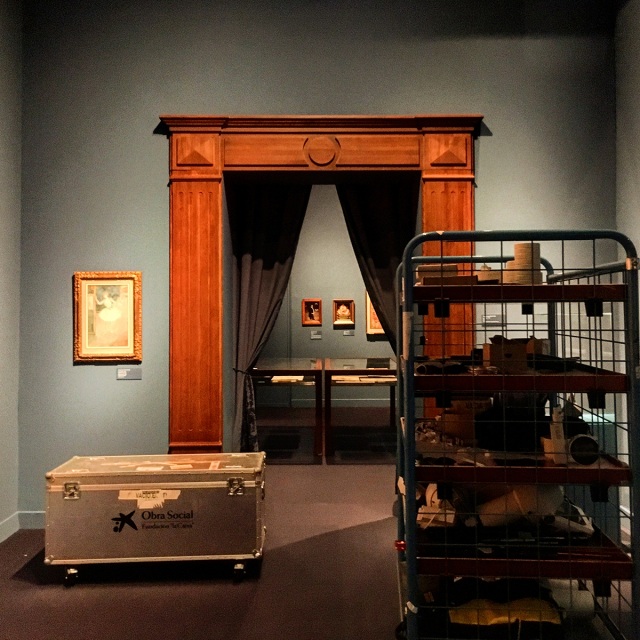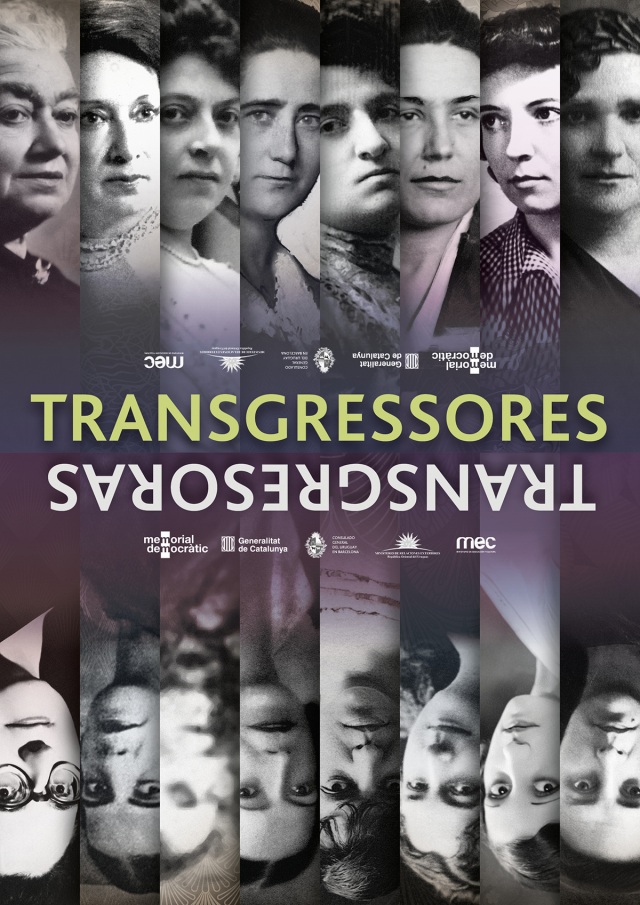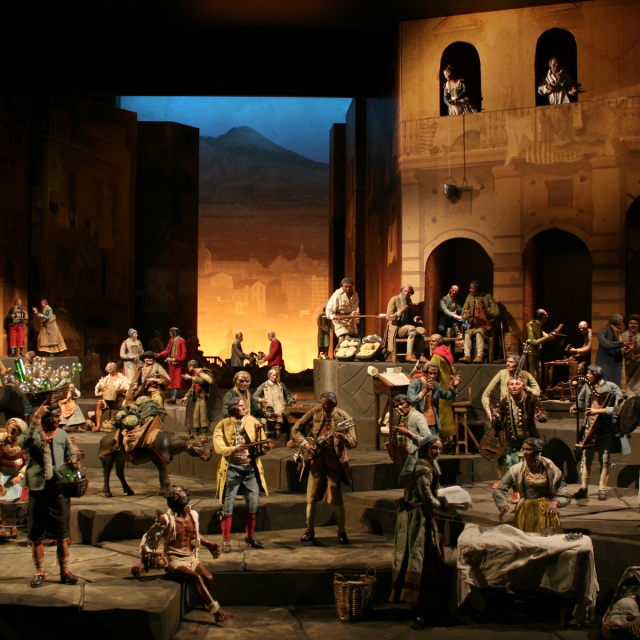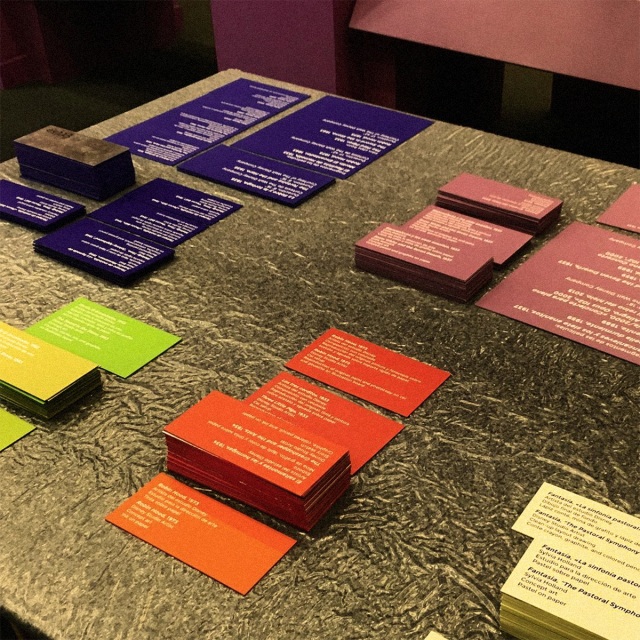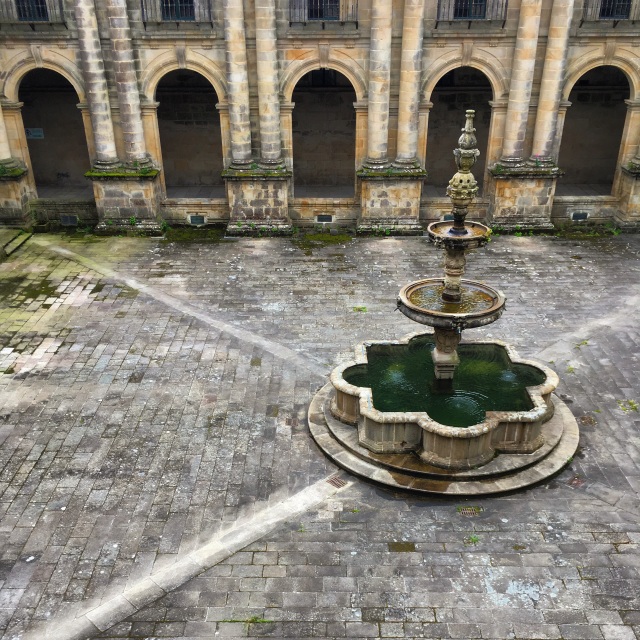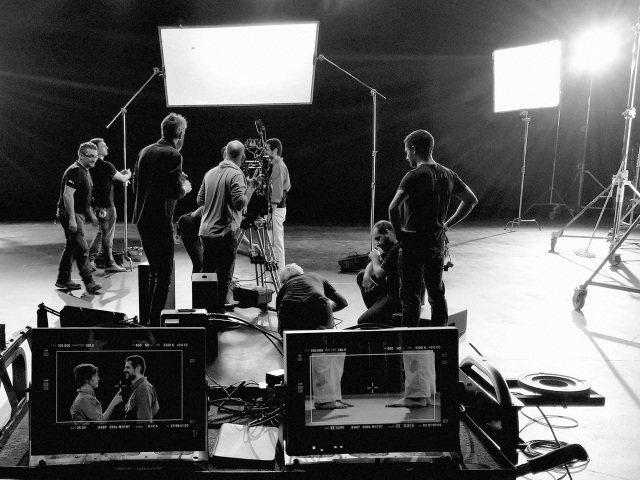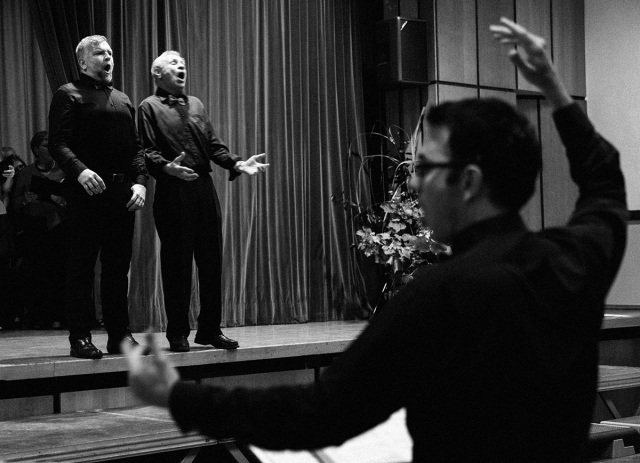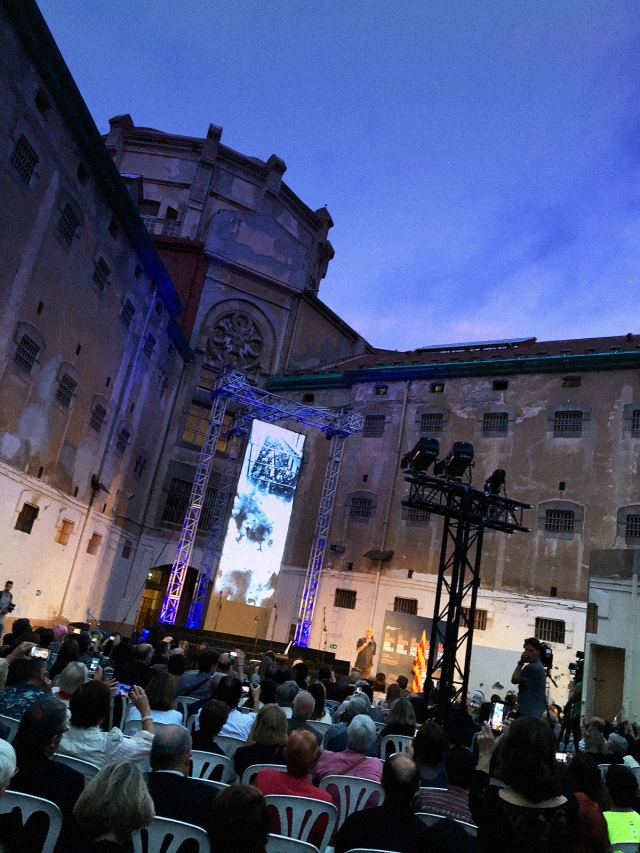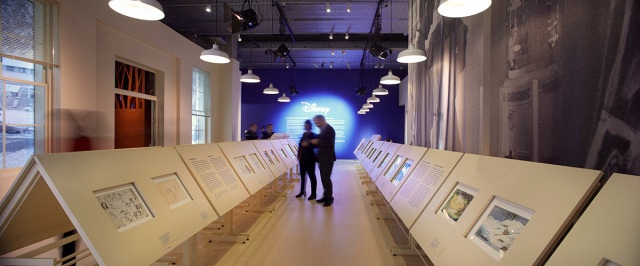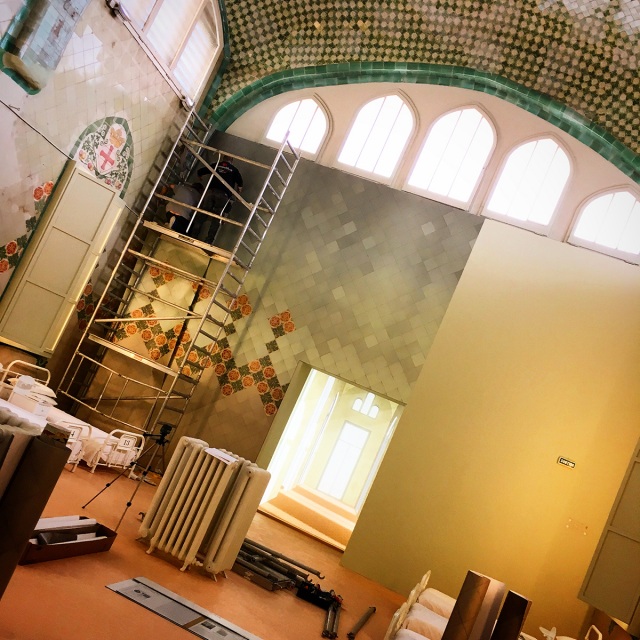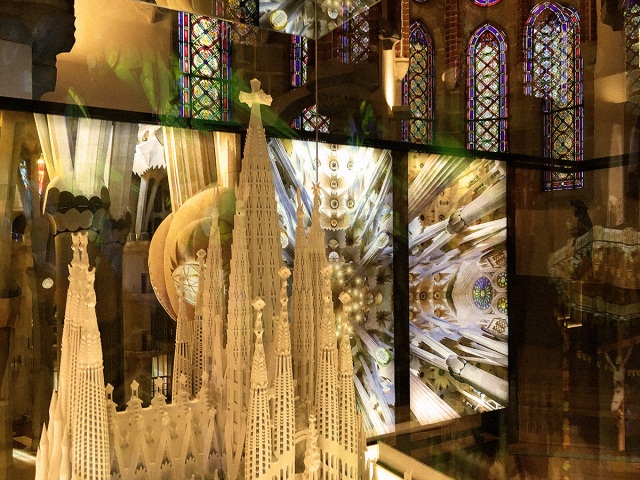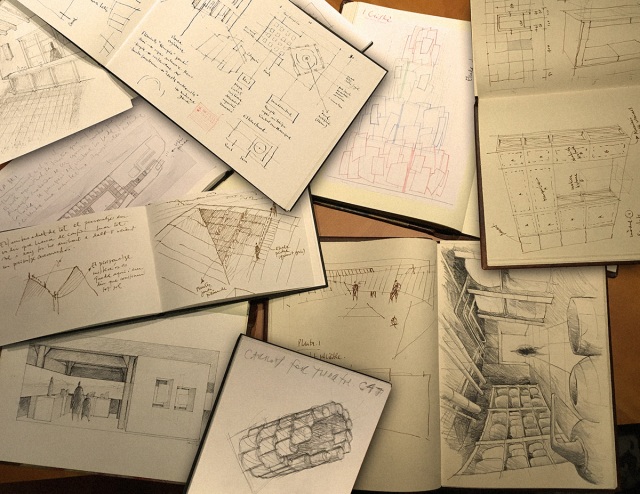These two documents—a brief text I wrote before rehearsals got under way and an interview I did just before the first night—offer an insight into my approach to stagecraft. The first text describes the part of the creative process that begins to emerge on stage on the first day of rehearsals, building on the solid foundations you have laid down by studying and analysing the opera on your own.
1
“The hero, fate and redemption”
Un ballo in maschera is one of Verdi’s operas whose breathless plot keeps audiences on the edge of their seat as they follow the time-honoured twists and turns at the heart of classical tragedy. The hero dies to prove the value of honour. Verdi becomes more relevant than ever and takes us on a journey through passion, hate, love, revenge and fate.
The production of Un ballo in maschera at Varna Opera House brings together all the elements of classical opera to tell this fateful tale in a stripped-down version that gets the message across clearly and precisely. The playwriting conveys Verdi’s voice directly without any sleights of hand, and the musical direction has the same goal in mind: to uphold the best traditions and values of Verdi’s work.
On stage, a large triangle representing earthly powers hangs over the characters and serves as Ulrica’s platform for prophesising the tragic ending. The central gash, the door through which fate observes us, becomes a terrible, powerful pivot that exterminates passion and love.
Riccardo, Amelia and Renato form another triangle whose end Ulrica also foresees. Try as they might to ignore the bad omens, the characters and audience are inevitably crushed by the sheer weight of the story.
In this production, the chorus acts as the audience’s messenger and the harbinger of the final tragedy, to which Riccardo and Amelia remain blind. As it moves across the stage, the chorus is often closer to the audience than to the characters and is able to give us valuable insights that leave us in no doubt of what awaits.
A very different outcome awaits poor Ulrica: like the ill-fated Cassandra, she tries desperately to warn Riccardo and Amelia of their fate but to no avail.
Un ballo in maschera is a story about remaining true to yourself and seeing your emotions through to their final consequences. It offers no judgement on the different characters, whose strength of commitment to their values propels the story onwards to its inevitable conclusion.
With his dying breath, however, the hero dispels any desire for revenge. Riccardo steers the story to the same denouement as Aeschylus’ Oresteia: justice and goodness triumph over irrationality and the thirst for revenge.
In our production, as the narrative arc comes to a close, Ulrica walks towards us, as the characters and the chorus utter a revealing warning: “Never tempt fate. A mother’s voice should be heard and respected.”
Here, Riccardo’s effort and devotion symbolise the energy of all opera professionals worldwide who are giving their all to save the world of art, which has never been so important and yet remains dreadfully undervalued by part of society. Embodied in the passion and devotion that drive the whole team at Varna Opera House, art is a treasure to be cherished. At this time of crisis, there is little doubt that Riccardo is the voice we should listen to if we are to escape the darkness of barbarity.
Ignasi Cristià
-
2
Compelling results only really start to emerge on stage, working alongside the singers and the musical director. This means being ready and willing to rework what looked like the right dramatic choices on paper. It’s a constant process of knocking things down so that you can rebuild anew from the rubble. That’s how you get a living, breathing production. In Virginia Woolf’s words, “Beauty must be broken daily to remain beautiful.”
1. You have built an impressive career as a highly versatile artist. Your main focus, though, seems to be working with space. You have worked with leading museums and opera houses across Europe and transformed a range of different exhibition spaces. How does Varna fit into your creative universe? What are you looking to achieve here with your staging of Un ballo in maschera?
Working in Varna is a tremendous challenge and great opportunity for me, because it’s a city with a long operatic tradition. I want this production of Un ballo in maschera to show opera’s power to bring us together, even though I’m from Barcelona. I think that both cities, both countries, share very similar values and that opera is proof of that. It’s a very rewarding way of bringing a different perspective to Varna, and I’m keen to see the audience’s reaction. I’m sure I’ll return to Barcelona all the richer for everything I’ve learned here. It’s been a positive experience for everyone involved.
My creative process for staging an opera begins by listening to it over and over again. There comes a point when I can visualise the set and the characters in different scenes. It’s as if it were being broadcast on a TV inside my head. At that point, I slowly begin to tune out of the music and start drawing what I can see in my mind’s eye: the set, specific design details and so on. That way I make sure I don’t forget anything. I have to rewind several times before I can find the words to describe what the singers are performing in my head, and I often have to go back to the original material, the score, to check that everything fits together.
A stage director’s work really begins in earnest when you start working with the singers and the musical director. On stage, my vision of the opera has to mesh with the ideas of the team of people who are going to perform it. The major challenge is for Bulgarians and Spaniards to understand each other.
2. Is this your first project for a Bulgarian opera house? Had you been to Bulgaria before?
This is the first time I’ve worked in Bulgaria. My closest previous experience was staging the ballet La fille mal gardée at Wrocław Opera House, in Poland, in 1991. Here, I’ve had quite a few flashbacks to that distant memory.
What really stayed with me from that experience was the feeling of forming part of a great theatre company where everyone was working together on the same project. I’ve felt the same intense feeling of belonging here too. That way of working together as a team forges close ties between everyone working in the theatre.
3. What kind of overall look and specific set design have you gone for in this production?
Un ballo in maschera is a great opera. The characters have a huge weight to bear, each with their own mission. It’s a meticulously constructed opera and thanks to its almost kaleidoscopic structure, you can stage it from various different perspectives. You could tell the story through Amelia’s eyes, Riccardo’s eyes, Ulrica’s eyes… And you’d have very different versions of the opera, even though they’d all share the same score. That’s the strength of a well-written piece of work. Verdi lets the director read his work from many different angles.
In this version of Ballo, I’ve gone with the character who behaves most humanely, Renato. I worked closely with Venseslav Anastasov to create a very believable figure, full of inconsistencies and contradictions. He’s the least monolithic character and the one who changes the most over the course of the opera. Renato’s complex nature makes for a very interesting staging. It was very important for the performer playing Renato to understand this, which is why he had to be both a great singer and a great actor. And Venseslav was just the person: he grasped Renato’s character perfectly and brought his own insight to bear on things I hadn’t seen. That’s how you work in the theatre, building the entire edifice from the ground up. Nothing is set in stone until the very end: the opera and the drama keep growing until the first night. We’ve come a long way since the first rehearsal and, centred on Renato, the drama has become more and more intriguing over time.
Hanging over the stage space is a large piece symbolising the power of fate and the horror of tragedy. Thanks to Ulrica, we all know what’s going to happen, but in this production we’ve held back a final surprise that will hopefully give the audience plenty to think about. It goes back to what I was saying earlier about what you can do with a well-written piece of work. We present Renato as the most humane character whose actions, when pushed to the limit, offer us an insight into our own behaviour: our fears, our wounded honour when we feel betrayed. Who hasn’t been betrayed at least once in their life? And who hasn’t felt like doing terrible things when they’ve been hurt? We can understand Renato perfectly even though we might not do what he chooses to do. Our staging brings out these very human dilemmas at the heart of Verdi’s great opera.
4. You have been working with musical director Krastin Nastev remotely from Barcelona. What do you think is the most important part of your professional partnership with him?
We built up a very interesting way of working. Krastin, working with the score, was keen to get across what Verdi was thinking about in his music; and as stage director, my job was to explore every avenue in Somma’s libretto. We worked together in tandem to link the music and the drama. He put himself in the composer’s shoes and I saw things through the librettist’s eyes. During rehearsals we worked alongside each other: while I was looking for ways of bringing out the drama in the characters, Krastin was doing the same with the music and the singers. His instincts on where to take the score fitted perfectly with my ideas on what I needed from the characters and the drama. By working in parallel, we got the most out of the opera: the action and the music go hand in hand, as we’ll see on stage.
5. What role has costume designer Iago Blasi played in shaping the look of this production?
Iago Blasi become involved right at the start and immediately grasped my plans for the set design. He has a very interesting take on things: the main characters will look exactly as we’ve always imagined singers in a Verdi opera to look like, but the members of the chorus are all dressed very casually and informally. By creating a close connection between the chorus and the audience, Iago has managed to break down one of the barriers to opera that can sometimes arise in more convoluted stagings. The modern character of the chorus helps give us a better understanding of the story.
6. As a singer yourself, were you ever tempted to take to the stage as a tenor in Varna?
I studied at the Conservatori del Liceu in Barcelona. I also sang in the chorus at the Gran Teatre del Liceu in two productions, Lohengrin and The Damnation of Faust, with two directors I learned a great deal from, Götz Friedrich and Paolo Carignani. I even entered the Montserrat Caballé International Singing Competition, but that’s when I realised I wasn’t called to be a singer. My experience as a tenor has helped me understand what singers do and the key role they play in performing and staging operas. Studying singing has helped me put myself in their shoes. It’s made me more aware of singers’ needs when it comes to directing an opera.
7. What obstacles have you had to overcome in Varna to put your ideas into practice? How would you compare the arts scene here to the situation in Spain in general and Catalonia in particular?
Varna and Barcelona have been putting on operas for over a hundred years, but there’s something here that’s lacking in my hometown: a tremendous pool of young talent. Bulgaria has given the world many great voices, and in Varna I’ve seen that singers form part of the city’s social fabric. This doesn’t happen in Barcelona. As I’ve said, I think that different perspectives are always mutually enriching, and opera is an art form that has always valued diversity. Singers, musical directors and stage directors are often all from different countries, and they each bring along their own point of view, which is very positive and constructive: these differences bring us closer together rather than push us farther apart.
8. What will you be working on after Varna?
I’ve got several projects on the go, but perhaps the most interesting one is a revival of a musical version of Euripides’ Medea that hasn’t been performed since before the Spanish Civil War. The great Catalan composer Joan Manén wrote the music to a libretto by Ambrosi Carrion, a very prestigious playwright at the time who fled after the war. My great-great uncle composed the music for several stage works by Carrion. This restaging will mean a lot to me as I’ll be working with material by a playwright who had close ties to my family. There are no recordings of the original production, so we’ve no idea exactly how it was performed at the time. The Spanish text is written for an actress and the music is scored for a string orchestra, piano and organ. As well as designing the set, I’ll also be directing actress Susanna Garachana.


